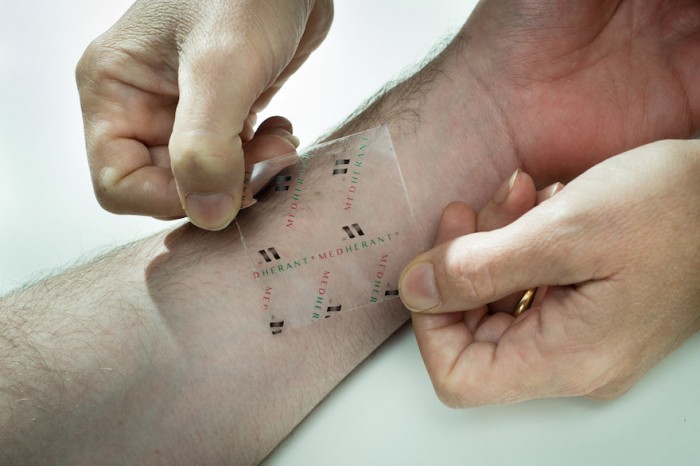
Researchers at the University of Warwick in collaboration with Medherant have produced the world’s first ever ibuprofen patch, which delivers the painkiller directly through the skin to exactly where it is needed at a consistent dose rate.
As it stands, pain sufferers rely on orally ingesting ibuprofen or applying the gel to treat pain. Taking the drug orally is damaging because sufferers often need to take it in damaging doses. The gel is difficult to control and inconvenient to apply.
Using polymer technology developed by the global adhesive company Bostik, the researchers created a transparent adhesive patch that can consistently deliver a prolonged high dose of the painkiller ibuprofen directly through the skin. They were able to do this because they found a way to incorporate significant amounts of the drug (up to 30 per cent of the patch's weight) into the polymer matrix that sticks the patch to the patient’s skin with the drug then being delivered at a steady rate over up to 12 hours.
“Many commercial patches surprisingly don’t contain any pain relief agents at all, they simply soothe the body by a warming effect. Our technology now means that we can for the first time produce patches that contain effective doses of active ingredients such as ibuprofen for which no patches currently exist. Also, we can improve the drug loading and stickiness of patches containing other active ingredients to improve patient comfort and outcome,” said research chemist, Professor David Haddleton.
The technology is expected to open the way for the development of a range of novel long-acting over-the-counter pain relief products which can be used to treat common painful conditions like chronic back pain, neuralgia and arthritis without the need to take potentially damaging doses of the drug orally.
“Our success in developing this breakthrough patch design isn’t limited to ibuprofen; we have also had great results testing the patch with methyl salicylate (used in liniments, gels and some leading commercial patches). We believe that a number of other over the counter and prescription drugs can exploit our technology and we are seeking opportunities to test a much wider range of drugs and treatments within our patch,” added Haddleton.




